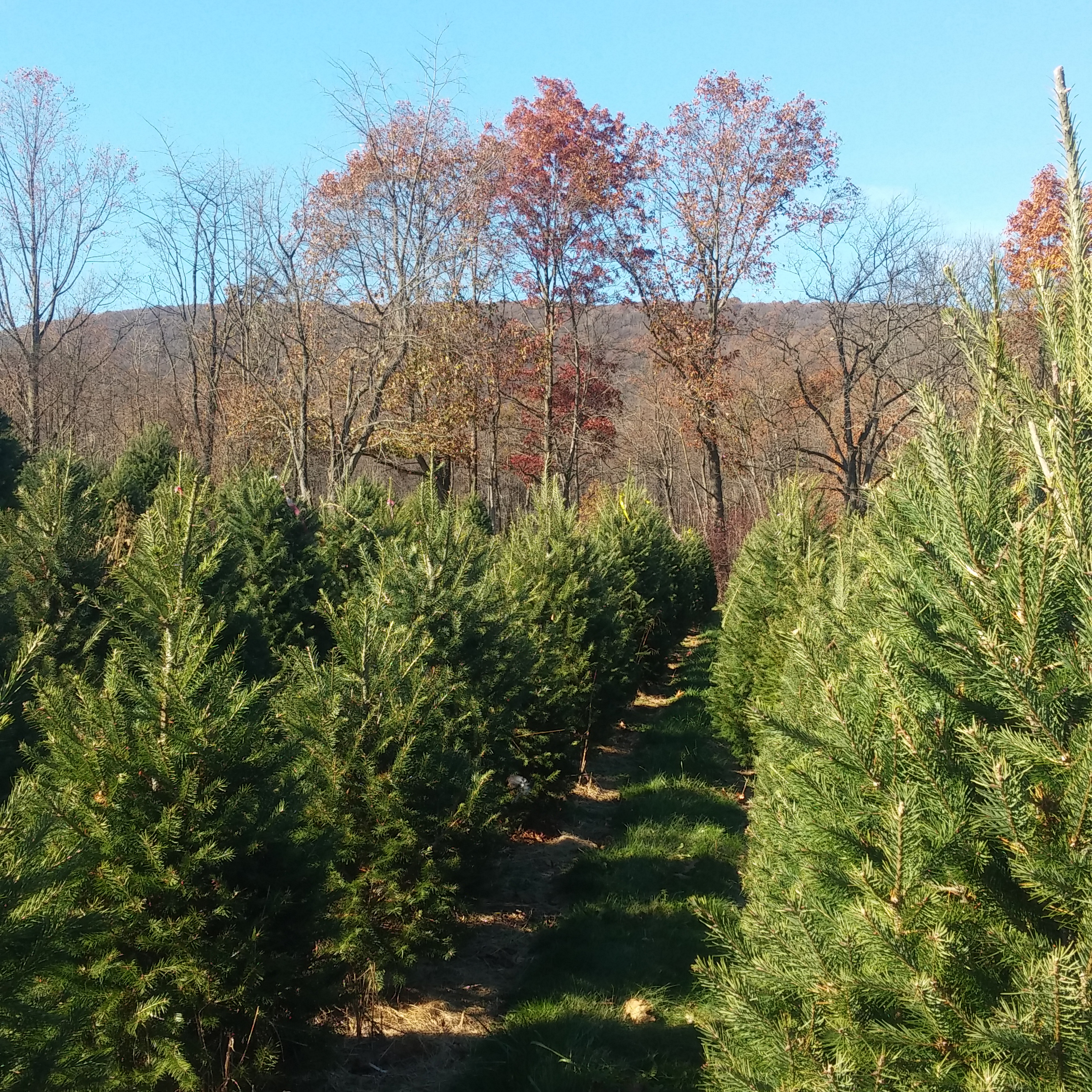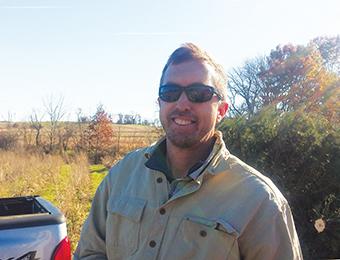
Editor's Note: Take a Bough
 ROAD TRIP
ROAD TRIP
Buying a tree at the Co-op is easy and a good deal at $36 for a 5-foot Douglas fir, but if you want something else, or something bigger, or you’re just into that choose-and-cut thing, Freymoyer Christmas Tree Farm is offering Weavers Way members $5 off any tree over $45. Get directions and hours at www.facebook.com/freymoyertreefarm. It’s a beautiful spot (and just down the road from Cabela’s, in fact, and I recommend the aquarium if you’ve never been there).
—Mary Sweeten
Christmas trees are a crop, in case you haven’t noticed. Pennsylvania is the fourth-biggest grower in the United States. In 2014, the latest year for USDA statistics, some 839,000 Douglas firs, Fraser firs, concolor firs, canaan firs, blue spruces but not Scotch pines — see below — worth more than $22 million, were harvested by more than 280 Pennsylvania Christmas tree growers.
Jeremy Freymoyer is the one who supplies them to Weavers Way.
Last month, I visited Freymoyer Christmas Tree Farm. It’s on 125 acres at the base of the Blue Mountain, outside Hamburg. In Freymoyer’s family since the 1920s, it was planted in apples then. The U.S. commercial Christmas tree industry only dates from around 1900, and Freymoyer’s family first planted some in the ’30s. Growing Christmas trees isn’t Freymoyer’s living — the Wyomissing, Berks County, resident has “a few irons in the fire,” including rental properties in nearby Reading and an escape room he’s about to open with a partner. (Check it out: Encrypted Escape West Reading at www.encryptedwr.com.)
But he’ll still get around to harvesting 1,500-1,800 trees — 80 percent of them in one grueling late-November week — for his choose-and-cut operation and a few wholesale customers, including us.
Commercial Christmas trees, which is to say evergreens of species that can be coaxed to grow in the shape of a Christmas tree, aren’t native to our Appalachian ridges. Freymoyer adheres to integrated pest management practices — he spreads no lime before its time! — but the western Douglas firs need a fungicide and the Carolina Fraser firs will succumb to mites and scale if he doesn’t apply a pesticide. Everything has to be fertilized, and “you can’t really get a manure spreader in there.”
“The blue spruce, you can get away without spraying,” Freymoyer said, noting that Weavers Way Ambler has ordered some of these “no-chemical” (air quotes his) trees. The Scotch pine, introduced from Europe, the tree-lot standard of my youth? “Too pesty. Nobody grows them anymore.”
In other words, a crop of Christmas trees requires intense management. “I guess you could grow an organic Christmas tree, if there wasn’t another Christmas tree within 30 miles,” Freymoyer said.
Nevertheless, something wonderful has been going on at Freymoyer Christmas Tree Farm. Only about 20 acres is actually in Christmas trees. There’s some hay and small grains (ag-speak for “not corn”), but Freymoyer manages most of the land for conservation, working with Pennsylvania’s Bureau of Forestry (“Shout-out to Tim Dugan!”), the Pa. Game Commission and the USDA’s Natural Resources Conservation Service. The property is, as he puts it, “a matrix of intact natural habitats from the mountain to the valley.” Just a dozen miles from Hawk Mountain, the Freymoyer tract supports native plants and wildlife, like the red-tailed hawks and what I’m pretty sure was a golden eagle I saw riding a thermal.
If “Natural Resources Conservation Service” rings a bell, that’s the federal agency whose staffers were memoed over the summer with suggestions to avoid the term “climate change.” For the record, Jeremy Freymoyer and I did not talk about climate change or agricultural policy. Just Christmas trees.
Have a merry one.

